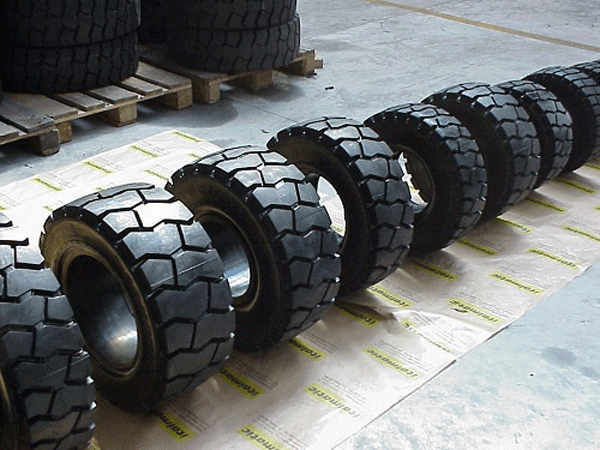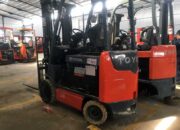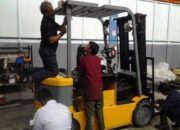Choosing the right forklift tire for the application
There are three common types of tires available for forklifts and a few others that are not so common. For forklifts to work efficiently and safely, it is equally important to choose the right forklift tires to equip the forklift’s applications and operations in many cases, in some cases the user does not. may be selected as the tires are manufactured specifically for certain models of forklift trucks.
Forklift tires (or solid tires), this is a fairly common forklift tire, it is often equipped for small forklifts, especially reach trucks, electric pallet trucks. These are solid construction tires with small diameters and they can only be fitted to wheels with a small capacity. This type of tire is usually machined using a specialized tire press.

This type of solid tire is not used in rough, slippery terrain, with poor sales due to the structure of the tire has poor semi-stickiness and low friction, so this tire is mainly used in flat terrain. flat, solid background. Using a forklift equipped with solid tires on rough ground can be dangerous as they can easily topple the vehicle. Forklifts
To avoid toppling the vehicle, one can increase the length of the forklift, lower the vehicle’s center of gravity, and the most important thing is the experience and consciousness of the driver.
Solid tires are usually manufactured without spikes to maximize contact, distribute the load evenly on the floor, limit damage, crack, and break the floor surface and avoid leaving traces on the floor.
Forklift tires with small treads that use air are usually used for medium-load vehicles working on flat terrain or terrain with small and small roughness, hard floor surfaces.
Tires with large spikes, inflatable wheels are often used for forklifts carrying large loads, working on rough terrain, hard and soft surfaces, with high slopes…







